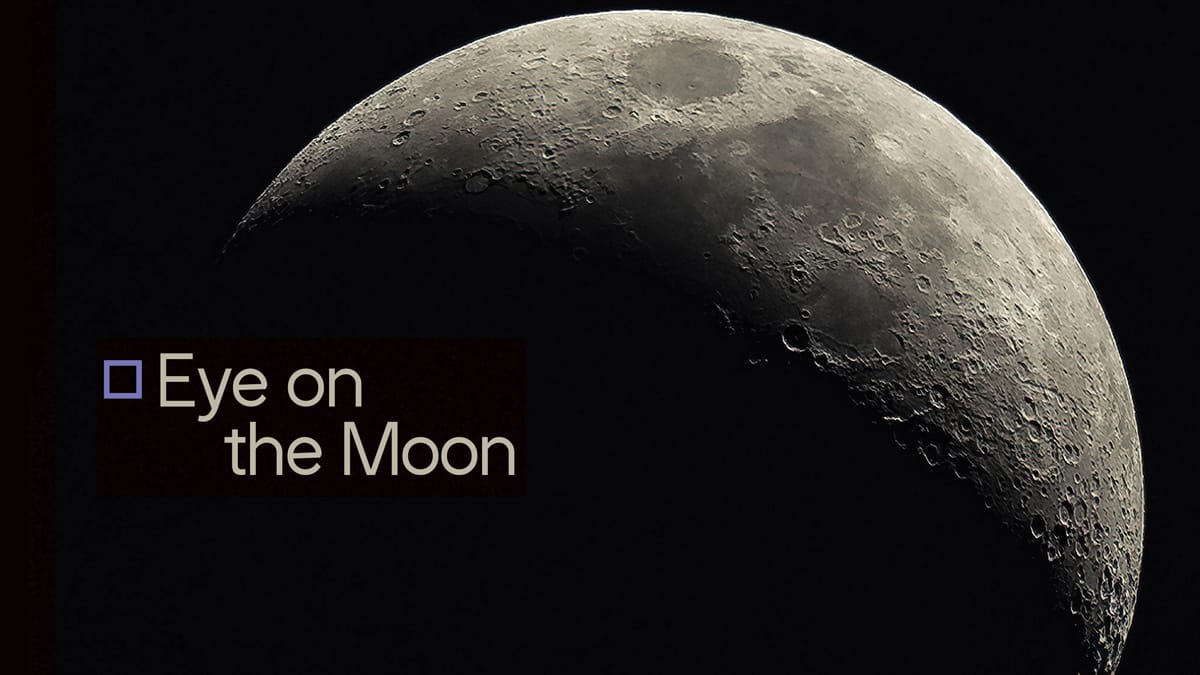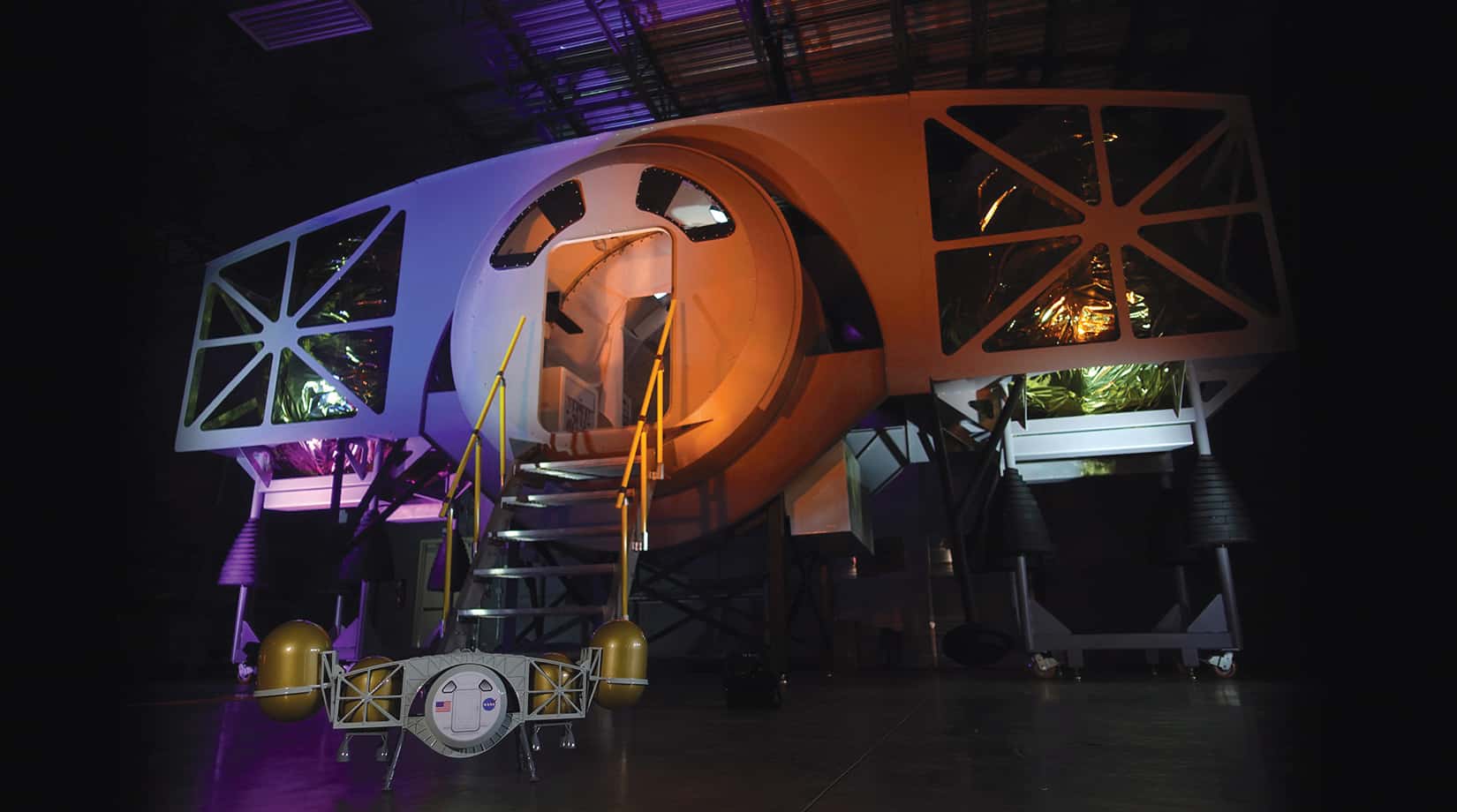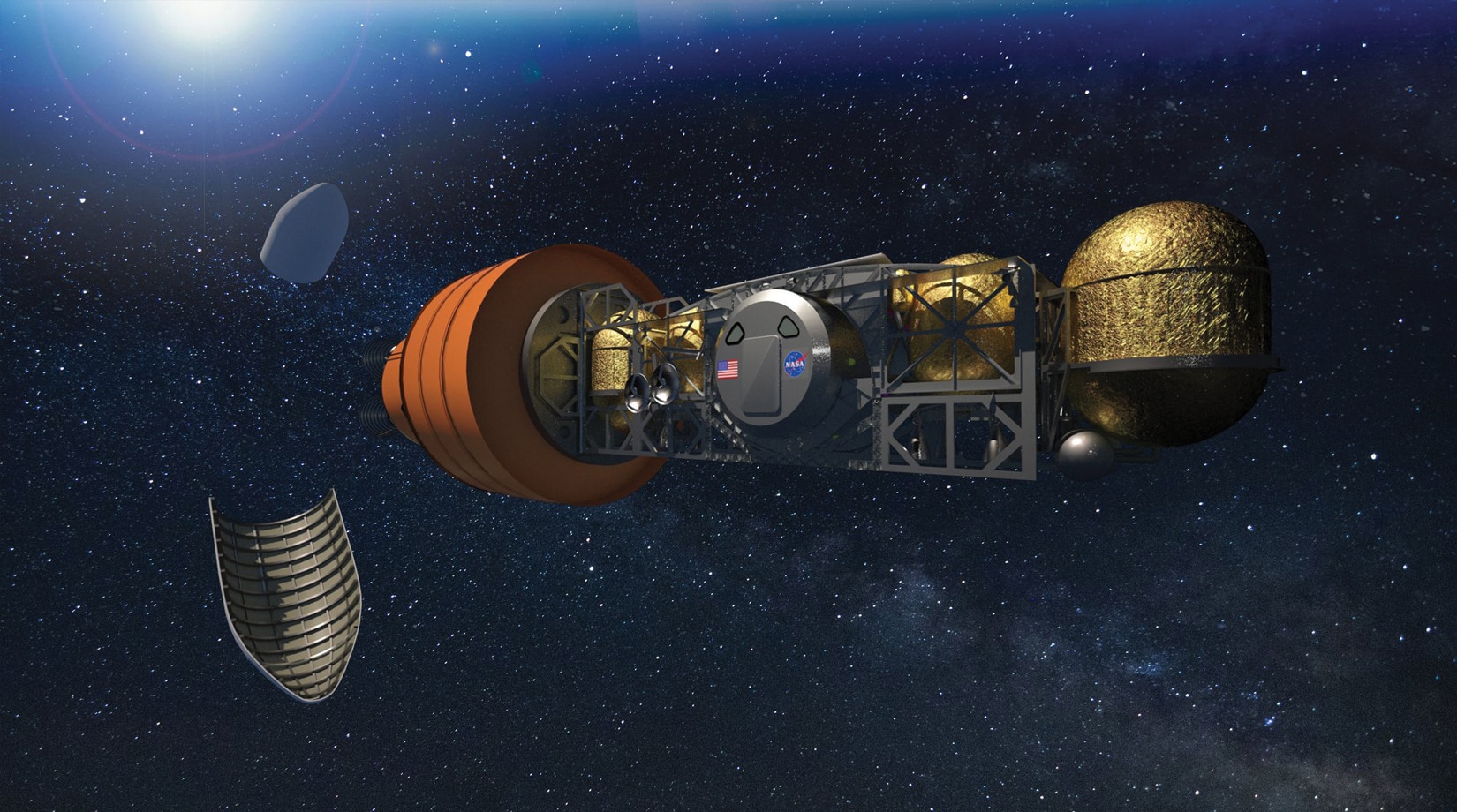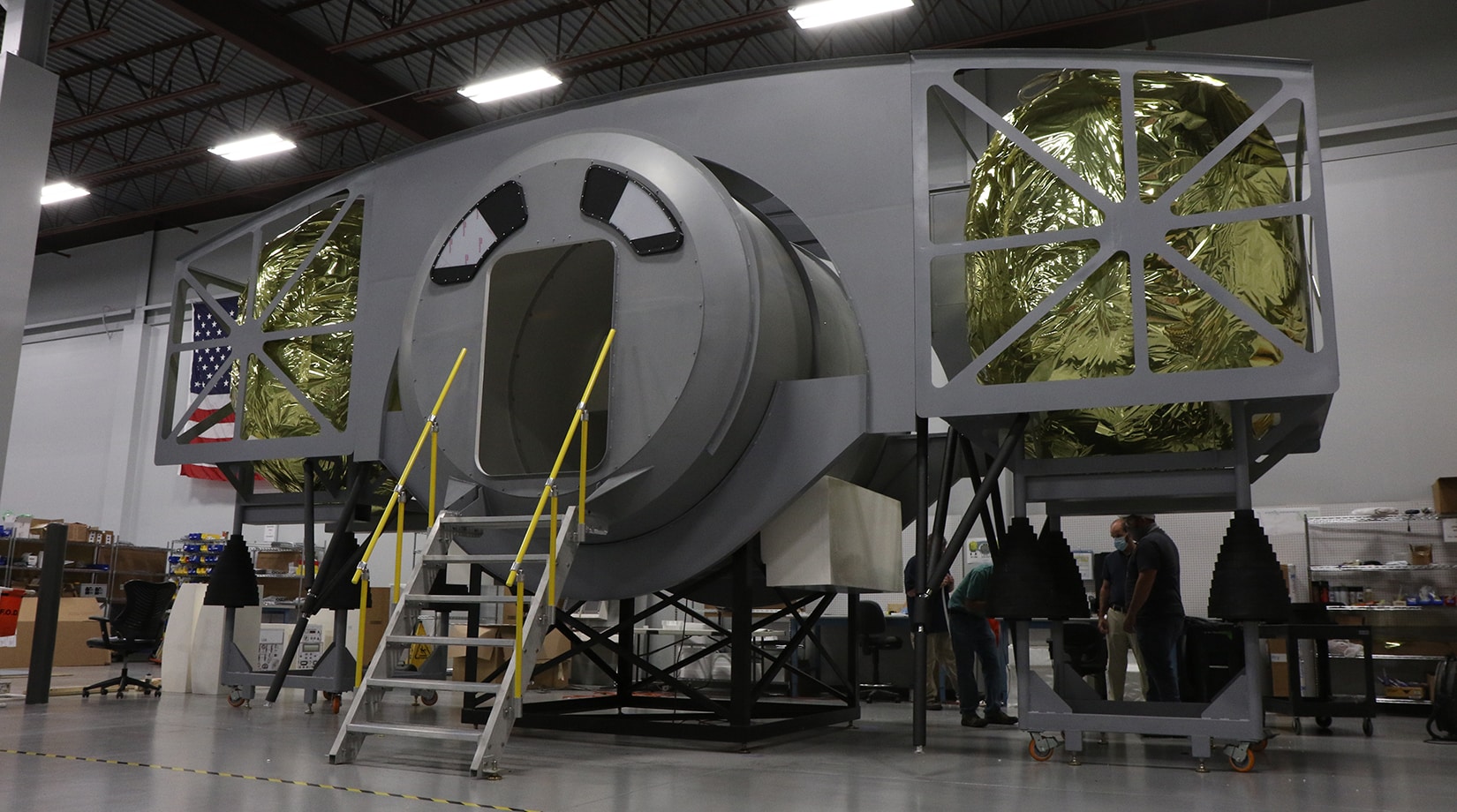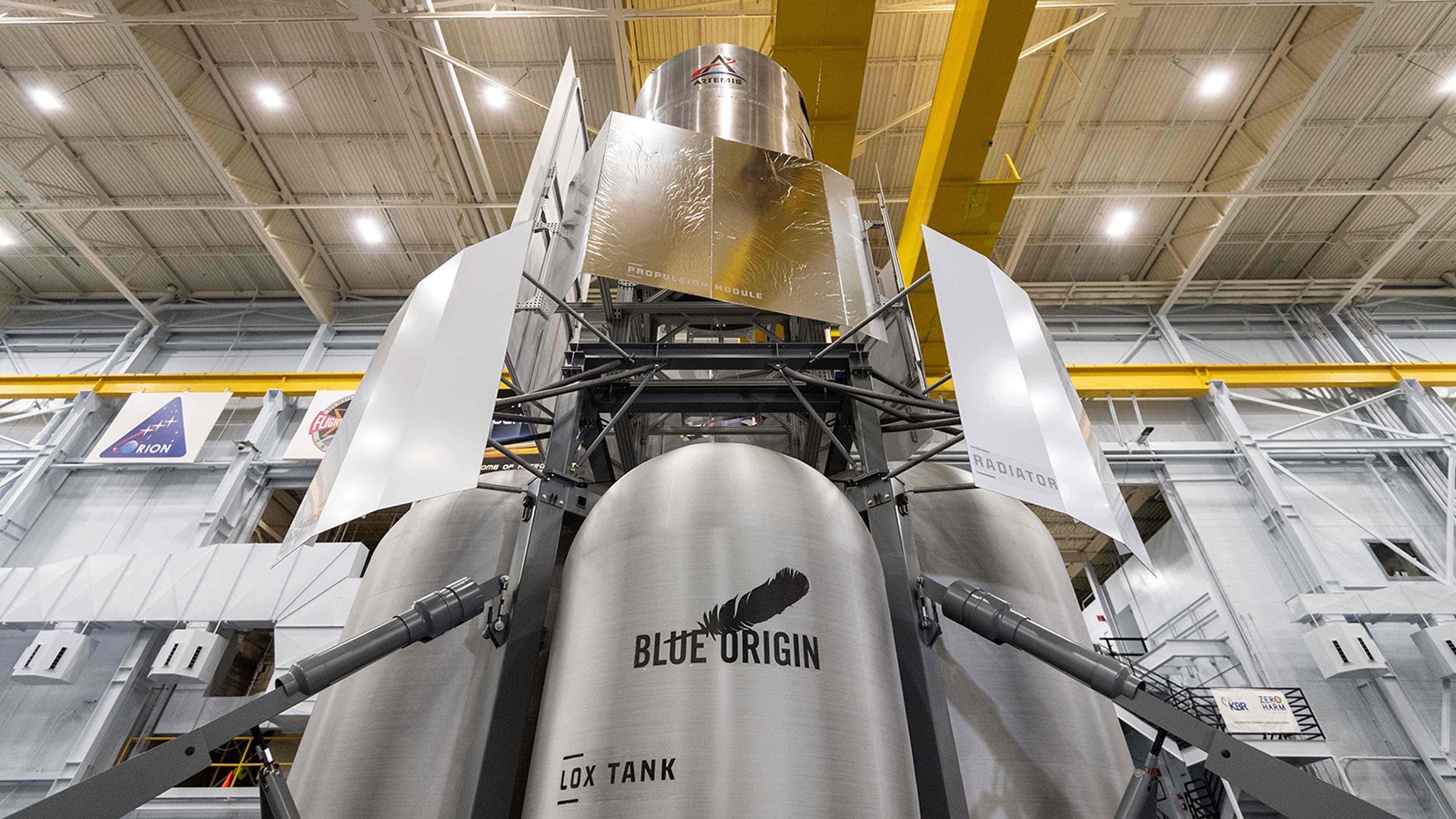By Claire Aiello, Vice President, Marketing & Communications
As NASA works to ready the Space Launch System for America’s journey back to the Moon and then on to Mars, three companies are focusing on their work for the Human Landing System (HLS) program, which would take astronauts to the lunar surface.
Marshall Space Flight Center manages the HLS program. The office isn’t very large, with about 40 civil servants. The HLS program builds on the concept of competition that was embraced in the Commercial Crew program, and NASA hopes to retain more than one HLS contractor through the development phase of the program. Marshall has outsourced some HLS work to Kennedy Space Center and Johnson Space Center, but the bulk will be done by contractors.
The three companies competing are Dynetics, Blue Origin, and SpaceX. Work is taking place right here in Huntsville for two of these projects, so we thought we’d explore HLS and show you what’s happening. We are the Rocket City, after all!
Dynetics’ HLS
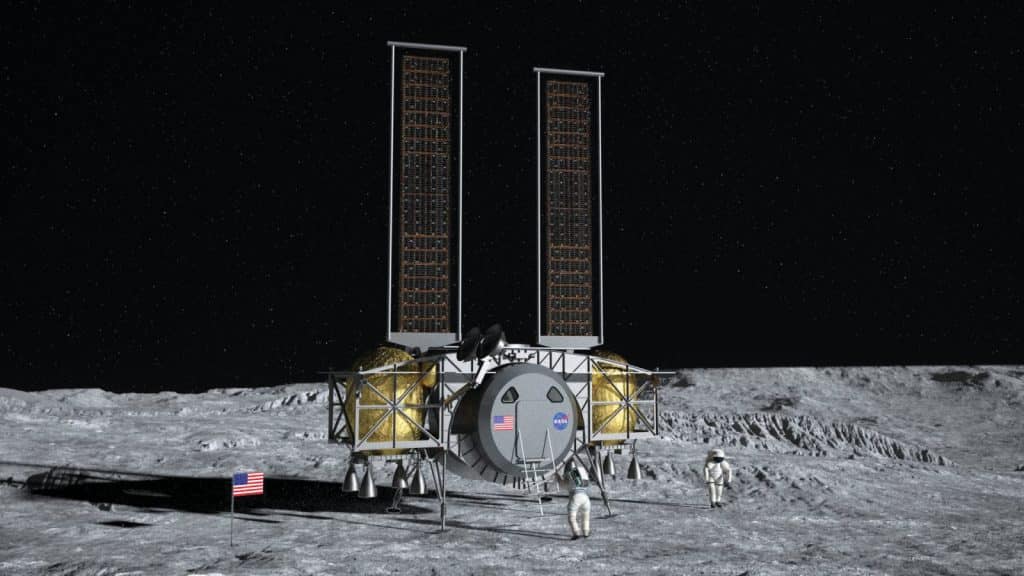
The Dynetics Human Landing System offers a unique, lowslung crew module, calling for horizontally acclimated drop tanks during descent to the lunar surface.
Dynetics’ lander is 15 feet high and 13 feet wide, and has room for up to four astronauts, taking them to and from the moon’s surface. The test article is located in Huntsville and is built to scale to allow for test and evaluation across the engineering lifecycle.
Dynetics, a Leidos company, is based in Huntsville and is working with more than two dozen subcontractors with expertise in specific technical areas. As of this writing, work is being done in 19 states, the District of Columbia, and Italy. “A challenge of the magnitude of HLS requires bringing the best capabilities in every technical discipline for every component,” said Andy Crocker, Dynetics’ deputy program manager of HLS. “Critical HLS hardware and software are being designed, built, and tested around the world.”
“However, the heartbeat of the program is in Huntsville,” Crocker added. “Not only is the (HLS) program management for NASA located at MSFC, Dynetics, the prime contractor and system integrator, has been located in Cummings Research Park for over 40 years. There are more Team Dynetics companies working in Huntsville than anywhere else.”
Dynetics plans to launch elements of HLS on United Launch Alliance’s new Vulcan Centaur rocket, which is being built in Decatur, Ala. Dynetics’ HLS would wait in lunar orbit for astronauts to board either directly from the Orion capsule following their flight on the SLS, or via the Gateway outpost orbiting the Moon. Gateway is another part of the deep space architecture that will serve as a staging point for lunar or Mars missions. The Dynetics HLS has eight rocket engines to descend and ascend from the lunar surface. Additionally, it can be fully integrated and launched on NASA’s SLS.
Dynetics has over 300 employees working on HLS, and Crocker says there are two to three times that many working at Huntsville- based subcontractors and other teams around the U.S. and the world. Locally, LSINC built the test article (shown above), a full-scale prototype that will be used for initial testing of crewed physical activities. Other Huntsville-headquartered companies involved in the project include A-P-T Research, Inc.; Cepeda Systems & Software Analysis, Inc.; Dynamic Concepts, Inc.; JBS Solutions; and Victory Solutions.
“It’s fitting that a Huntsville-based company is involved in this new lunar endeavor,” added Crocker. “When America first decided to put astronauts on the moon, it looked to Huntsville. Huntsville was at the center of answering the challenge of Sputnik. Huntsville built the Redstone rocket that launched the first American astronaut into space. It was brilliant engineers and scientists from Huntsville who helped assert American space dominance with Apollo. That love of exploration – of doing more, going farther – it’s in our DNA. The unwavering pride in the American space program, the excitement – it’s palpable in Huntsville. Dynetics was founded in the wake of Apollo’s success. Now, Dynetics is part of the story. We think it just makes sense.”
Dynetics Space Division’s capabilities include propulsion systems, small satellite development, mechanical and propulsion testing, system integration and assembly, mission design and vehicle sizing and vehicle structure design and manufacturing.
National Team’s Lander
-
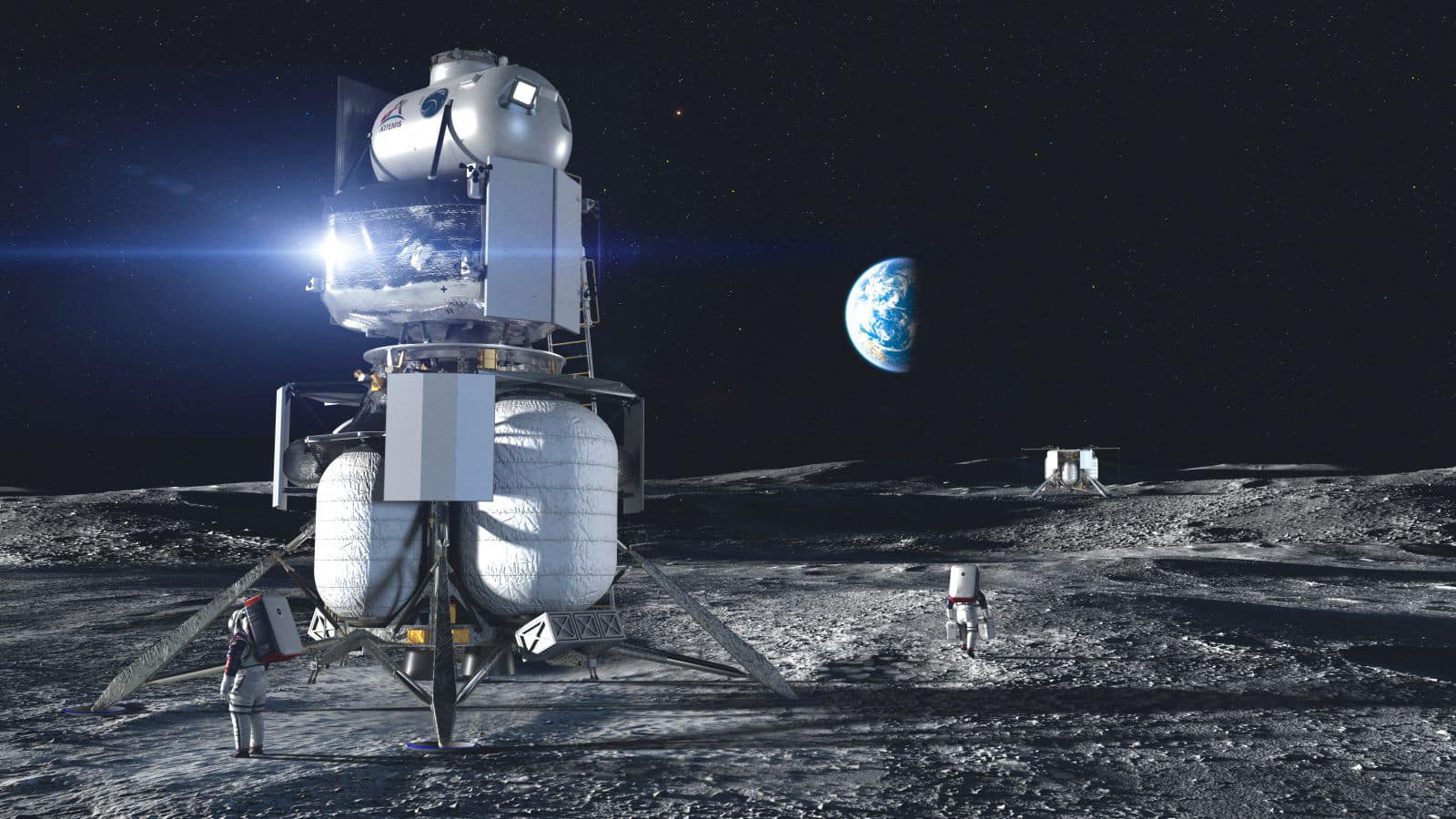
- Blue Origin’s Integrated Lander Vehicle (ILV) three-stage lander will be launched on its own New Glenn Rocket System and ULA Vulcan Launch System.
The Blue Origin-led National Team, comprised of Blue Origin, Lockheed Martin, Northrop Grumman, and Draper, delivered a full-scale engineering mockup of its Integrated Lander Vehicle to NASA’s Johnson Space Center in Houston, Texas on August 20. It stands at more than 40 feet and showcases two elements of the National Team’s multi-element architecture, the ascent element and descent element.
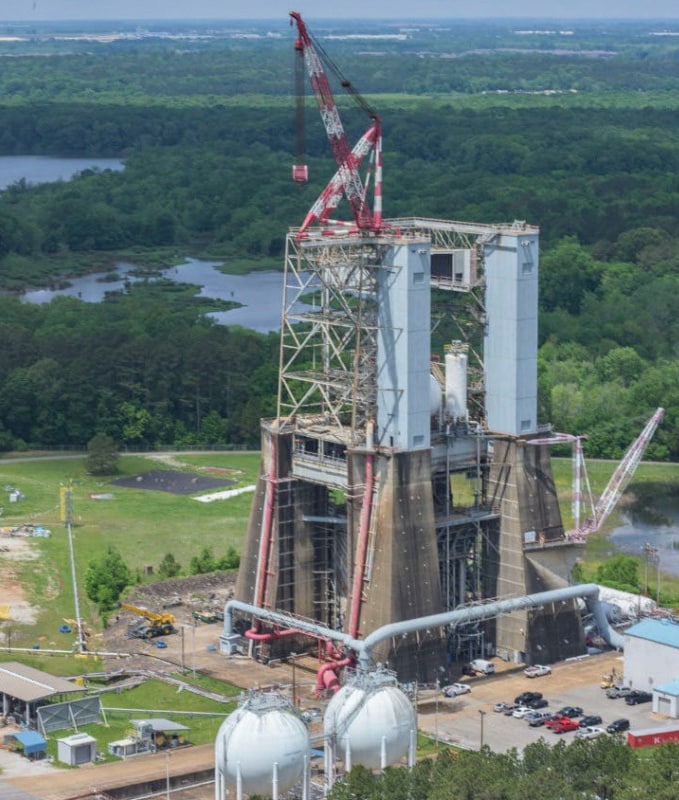
Blue Origin has upgraded and refurbished Test Stand 4670 at NASA’s Marshall Space Flight Center in Huntsville to support testing of their BE-3U and BE-4 rocket engines.
Blue Origin is developing the descent element, which is based on the company’s Blue Moon cargo lander and BE-7 LOX/hydrogen engine, both in development for more than three years.
BE-7 engines will be used on both the descent element built by Blue Origin and the transfer vehicle element built by Northrop Grumman. Blue Origin is testing its BE-7 engines on Test Stand 116 at Marshall Space Flight Center, working with NASA Marshall civil servants to facilitate these tests.
Lockheed Martin is working on the reusable ascent element, and Northrop Grumman is working on the transfer element, which is based on its Cygnus cargo module which has flown several resupply missions to the International Space Station. Draper is developing guidance and control and avionics systems for both the National Team’s lunar lander and for Dynetics’ HLS vehicle.
All of the National Team partners have a presence in Huntsville, but detailed work plans are proprietary during the competitive phase, according to Blue Origin.
Earlier this year, Blue Origin opened its new engine manufacturing facility in Cummings Research Park. The world-class facility will add 300 jobs to the local economy and conduct high rate production of the BE-4 and BE-3U engines. The company is refurbishing Historic Test Stand 4670 at Marshall, which will add another 50 Blue Origin employees to Huntsville, and both engines will be tested there. BE-3U is the upper stage engine on Blue Origin’s New Glenn rocket, and BE-4 powers the first stage. BE-4 will also be on United Launch Alliance’s Vulcan Centaur rocket. The National Team’s Integrated Lander Vehicle could be launched on New Glenn, Vulcan, or NASA’s SLS.
“We anticipate HLS to be a robust, sustainable program leading to routine cargo and crew missions to the lunar surface,” said Brent Sherwood, Blue Origin’s vice president of Advanced Development Programs. “We are in it for the long haul, since commercial lunar operations is key to our vision of developing space resources and opening space to humankind. Blue Origin and the National Team are in Huntsville to stay.”

The first hotfire test of Blue Origin’s BE-7 engine took place June 18, 2019, on a test stand at NASA’s Marshall Space Flight Center. CREDIT: TWITTER@JEFFBEZOS
What’s Next?
The three companies will continue to compete and plan through February of 2021, awaiting NASA’s down-select. The agency has indicated it could choose more than one company as it prepares for the return to the moon three years later. “The plan has been to keep two going to the moon.
The first one in 2024 and the next one in 2026,” said Lisa Watson-Morgan, HLS program manager at NASA’s Marshall Space Flight Center in Huntsville. “I am confident in NASA’s partnership with these companies to help achieve the Artemis mission and develop the human landing system returning us to the Moon. We have a history of proven lunar technical expertise and capabilities at Marshall and across NASA that will pave the way for our efforts to quickly and safely land humans on the Moon in 2024.”
This article appears in the October issue of Initiatives magazine, a publication of the Huntsville/Madison County Chamber.



